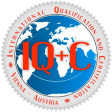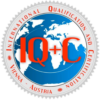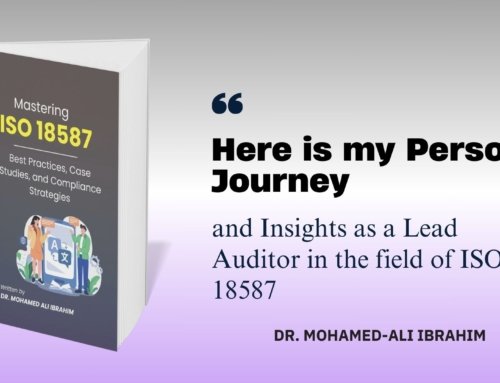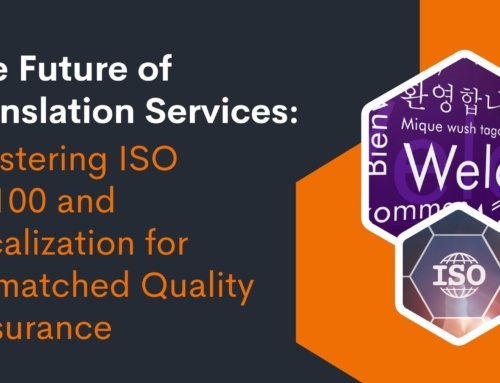The Hidden Risks in Legal Translation and How to Manage Them
In the world of law, precision is paramount. Every word counts—especially when it comes to legal documents that cross language barriers. Whether you’re drafting contracts, dealing with international clients, or working on multinational legal matters, ensuring the accuracy of legal translations is essential to avoid costly mistakes and protect your reputation.
Legal translation is not just about converting words from one language to another; it’s about capturing the full legal meaning behind those words, making it a highly specialized field. In this guide, we’ll show you how to avoid common translation pitfalls, understand the importance of ISO 20771, and work effectively with legal translators to ensure flawless communication across languages.
But it’s not just about avoiding mistakes. In this post, we’ll also share resources that will elevate your legal translation skills, including e-workshops and books that dive deep into the intricacies of legal translation.
The Crucial Role of Legal Translation
Legal translation isn’t your average translation. It requires deep knowledge of the legal systems in both the source and target languages, as well as expertise in the unique terminology used in legal documents. Whether you’re dealing with contracts, court rulings, witness testimonies, or patents, a legal translation error can have serious, sometimes irreversible, consequences.
Legal translators are not just linguists—they’re bilingual legal experts who understand both the source and target legal systems. Their job is to ensure that no legal meaning is lost in translation and that the final document is legally binding and accurate in both languages.
Avoiding Costly Mistakes: Top Pitfalls to Watch For
Even the most experienced legal professionals can fall prey to common mistakes in legal translation. Let’s dive into the most frequent pitfalls and how you can avoid them.
- Misunderstanding Legal Terminology
Legal systems have unique terminology that doesn’t always have a direct translation. A legal translator must be familiar with the specific legal language in both jurisdictions. Without a strong grasp of these terms, your document could be at risk of misinterpretation.
For instance, a term in one jurisdiction could have a different meaning in another, potentially altering the intent of the contract. This is why working with certified legal translators is essential.
- Inaccurate Legal Systems Knowledge
Laws differ widely across countries and even within jurisdictions. A phrase or term that is common in one legal system might not be recognized in another. For example, concepts like “common law” or “civil law” can vary drastically. Legal translators must have not only linguistic expertise but also a deep understanding of the legal context in both languages.
- Failing to Proofread and Verify
Legal documents require meticulous proofreading. Errors in translation can change the outcome of a case or the interpretation of a contract. To avoid this, always ensure that the translation is reviewed by a legal expert familiar with the document’s subject matter. This two-step process—first translation, then legal verification—will significantly reduce errors.
- Formatting Oversights
While most translators focus on translating the text, formatting plays a crucial role in maintaining the document’s legal integrity. Legal documents often follow strict formatting rules, including specific fonts, spacing, and numbering conventions. A legal document with improper formatting can lead to confusion and delays.
ISO 20771: The Gold Standard for Legal Translation
ISO 20771 is the international standard specifically designed for legal translation. This standard lays out a framework that ensures legal translations meet high-quality criteria, including accuracy, reliability, and consistency.
Understanding and adhering to ISO 20771 is essential for legal translators, as it helps mitigate the risk of errors that could affect the validity of a translated legal document. It is a quality assurance standard that’s recognized globally, helping legal professionals ensure they are working with certified and qualified translators.
For legal professionals who wish to work with translators or even achieve certification themselves, gaining familiarity with ISO 20771 is a critical step. This knowledge will not only improve your ability to communicate across language barriers but also ensure the legal integrity of your documents.
How to Work Effectively with Legal Translators: Best Practices
Successful legal translation requires collaboration between the lawyer and the translator. Here are some tips to ensure a seamless working relationship:
- Provide Clear Instructions
When working with a translator, ensure that they understand the document’s purpose and any specific requirements you may have. Clear instructions, including the document’s context, legal references, and preferred terminology, will help the translator deliver a more accurate result.
- Set Realistic Deadlines
Legal documents often need to be translated quickly, but rushing a translator can lead to errors. Allow ample time for the translation process, factoring in time for proofreading and revisions. This will result in a higher-quality translation.
- Choose Certified Legal Translators
Always choose translators who are certified in legal translation. Certification ensures that the translator is not only proficient in both languages but also has specialized knowledge of legal terminology and practices.
- Establish Confidentiality Agreements
Legal documents often contain sensitive information. Ensure that the translator you’re working with signs a non-disclosure agreement (NDA) to maintain confidentiality. This protects both you and your clients.
- Collaborate on Terminology
Legal translations can be tricky when it comes to terminology. Collaborating with your translator on specific terms—especially those with no direct equivalent—will help ensure consistency throughout the document. Providing a glossary of legal terms can go a long way in ensuring accuracy.
Additional Resources to Enhance Your Legal Translation Skills
To deepen your knowledge of legal translation, we recommend checking out these excellent resources:
- Books on Legal Translation
For a more comprehensive understanding of legal translation, consider reading The Lawyer’s Guide to Legal Translation, available on Amazon. This insightful book explores the nuances of legal translation, providing practical tips and in-depth case studies that will be invaluable to any lawyer or translator.
- E-Workshops on Legal Translation
If you’re looking to further your expertise in legal translation, our e-workshop on Conquering ISO 20771 Certification is a must. This workshop is tailored for freelancers and legal professionals alike, helping you master ISO 20771 certification, a critical standard for anyone involved in legal translation. The course covers everything from the certification process to practical advice on improving your translation skills.
- Workshops and Training at Our Academy
Our Academy offers comprehensive training on legal translation, ISO 20771, and best practices in cross-cultural legal communication. Join our workshops to gain hands-on experience and certification, equipping you with the skills needed to excel in the competitive field of legal translation.
Conclusion: The Importance of Accuracy in Legal Translation
In the legal world, precision matters. A small mistake in translation can result in misinterpretation, loss of business, or even legal disputes. By understanding the basics of legal translation, adhering to ISO 20771 standards, and working with qualified translators, you can significantly reduce the risk of errors.
For further guidance, check out the e-workshop on ISO 20771 certification and read The Lawyer’s Guide to Legal Translation for more in-depth insights into the field.
By investing in these resources, you’ll ensure your legal translations are accurate, reliable, and legally sound, helping you navigate the complexities of the global legal landscape with confidence.







